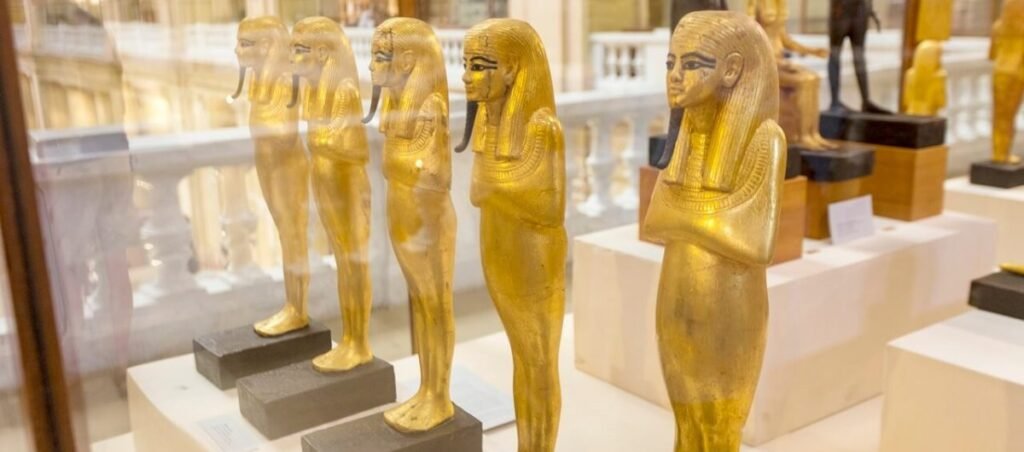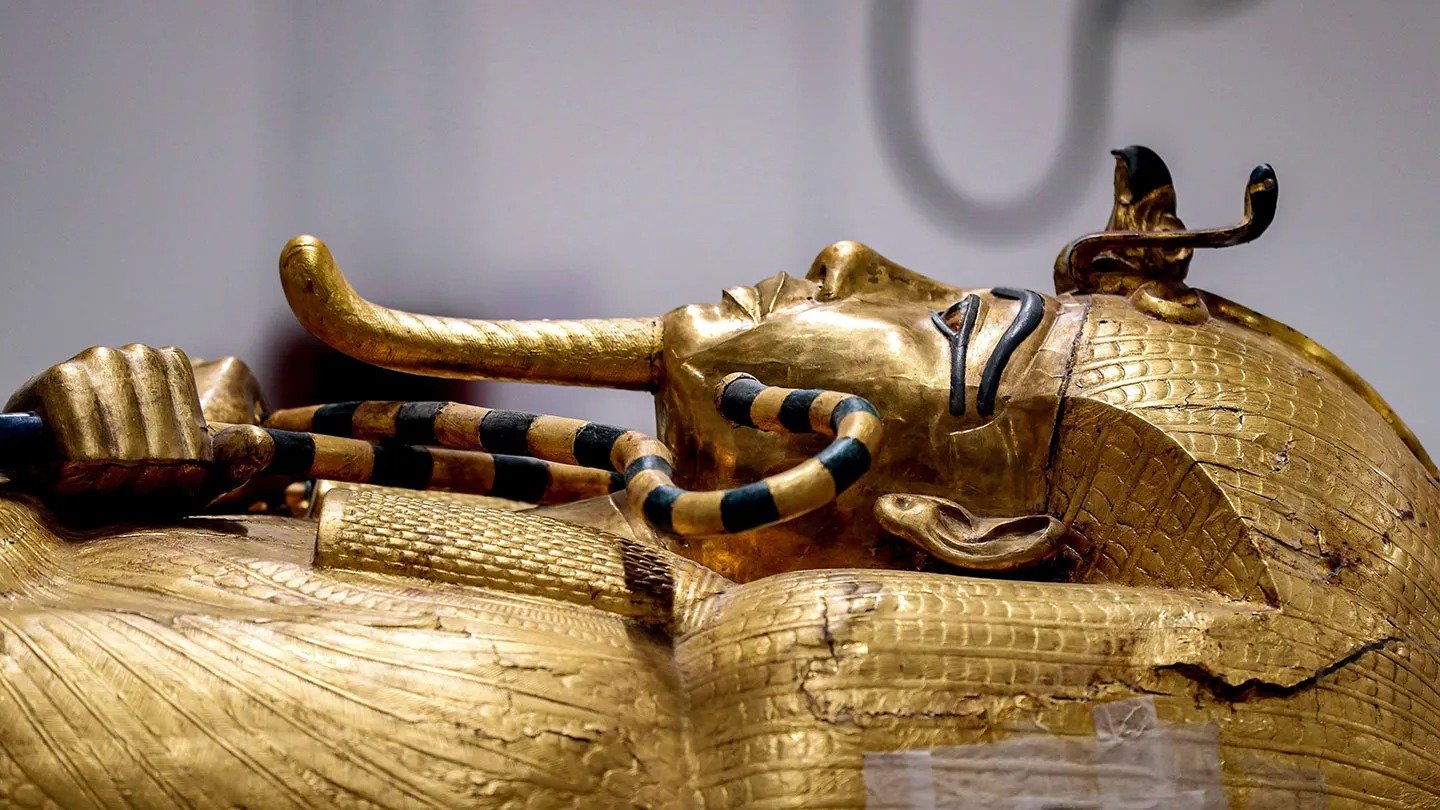King Tutankhamun
Tutankhamun is one of the most famous names in the world of ancient history, a young king whose discovery changed the way we view Egypt forever. Known widely as King Tut, this pharaoh’s story captivates travelers, historians, and adventurers alike. The tomb of Tutankhamun, found in the Valley of the Kings, revealed treasures beyond imagination and gave the world an intimate look into royal life thousands of years ago. For anyone planning Egypt tours, visiting the monuments and museums linked to this young ruler is a journey back in time to the golden age of pharaohs. Whether it’s gazing at Tutankhamun’s mummy, admiring his legendary mask, or exploring the temples near Luxor and Aswan, the legacy of the Golden King of Egypt makes Egypt one of the world’s greatest destinations.
The name Tutankamon meaning is often translated as “the living image of Amun,” highlighting the young pharaoh’s role in restoring the worship of the god Amun during Egypt’s 18th dynasty. Many history enthusiasts and travelers often wonder, has the Grand Egyptian Museum opened to the public, as it is expected to display a remarkable collection of artifacts from his tomb, including golden treasures, chariots, and ceremonial objects. Among the most captivating highlights for visitors is the mummy of Tutankhamun, which provides a direct and powerful connection to the boy king who reigned over 3,000 years ago and continues to fascinate the world with his enduring legacy.
The Young King Tutankhamun and His Rise to Power
The story of the young king Tutankhamun begins around 1332 BC, when he ascended the throne at just nine years old. His reign, though short—lasting only about nine years—played a significant role in restoring Egypt’s stability after the religious upheavals of his predecessor, Akhenaten. Tutankhamun’s original name was Tutankhaten, but he changed it to Tutankhamun, meaning “Living Image of Amun,” to honor the restored state religion. His queen, Ankhesenpaaten, also changed her name to Ankhesenamun, aligning with the traditional gods of Egypt.
Travelers exploring Egypt today can still sense this dramatic shift in history when visiting temples dedicated to Amun in Luxor. A walk through the Luxor Museum or Karnak Temple reveals the artistic revival linked to Tutankhamun’s era. Despite his young age, his reign marked a return to grandeur, reinforcing traditions that had been abandoned. His short life adds a layer of mystery for modern travelers who stand before his relics and wonder what kind of man this boy-king might have become if he had lived longer.

The Tomb of Tutankhamun: A Discovery That Shook the World
No story about this pharaoh is complete without mentioning the tomb of Tutankhamun. Discovered in 1922 by Howard Carter, this find remains one of the greatest archaeological discoveries ever. Unlike many other royal burials, King Tutankhamun’s tomb was largely intact, filled with over 5,000 priceless artifacts. The golden shrines, jewelry, weapons, and the famous funerary mask dazzled the world.
For travelers, standing in the Valley of the Kings near Luxor and entering Tutankhamun’s tomb is a once-in-a-lifetime experience. Although many of the treasures are now preserved in the Egyptian Museum in Cairo and the new Grand Egyptian Museum in Giza, the tomb itself carries an atmosphere of awe. The walls still display vivid paintings showing Tutankhamun’s journey to the afterlife. For those booking Egypt tour packages, a guided visit here is essential, and nearby landmarks such as Hatshepsut’s Temple and the Colossi of Memnon make the Valley an unmissable stop.
Mummy of Tutankhamun and the Secrets It Revealed
The discovery of Tutankhamun’s mummy provided an unparalleled chance for modern science to study the pharaoh’s life and death. Encased in three golden coffins and surrounded by magical amulets, the mummy was first unwrapped in the 1920s. Over the years, advances in technology have revealed clues about the king’s health and cause of death. CT scans suggest that King Tutankhamun’s mummy shows signs of a fractured leg and possibly malaria, sparking endless debate among historians.
Travelers fascinated by ancient medicine and rituals can see Tutankhamun the mummy on display in his tomb in Luxor. His face, preserved for over 3,000 years, creates a direct and emotional connection between past and present. Visiting the tomb allows one to reflect on the mystery of his premature death, while exploring nearby temples reveals how Egypt celebrated life, death, and rebirth. For those planning Egypt tours from Canada or Europe, this encounter is often the highlight of their journey.
The Reign of King Tutankhamun: Restoring Order
The short but impactful Reign of King Tutankhamun is remembered for restoring traditional Egyptian values. After his father Akhenaten’s radical worship of the sun disk Aten, Tutankhamun reinstated the worship of Amun and other gods, ensuring political stability. His reign also witnessed the rebuilding of temples, the revival of art, and efforts to strengthen ties with foreign powers.
Modern visitors can see this legacy in temples across Egypt, from Karnak to Luxor Temple, where hieroglyphics celebrate the return to religious order. His decisions as king may have been guided by advisors like Ay and Horemheb, but they shaped Egypt’s cultural revival. Travelers walking through these temples can sense the importance of Tutankhamun’s rule in shaping Egypt’s golden heritage. Including stops at these landmarks in Egypt tour packages adds depth to the journey, allowing travelers to walk in the footsteps of ancient priests and pharaohs.

Treasures of the Golden King of Egypt
Tutankhamun became known as the Golden King of Egypt because of the dazzling artifacts found in his tomb. The treasures included golden thrones, ceremonial chariots, weapons, statues of gods, and his iconic funerary mask. Each object symbolized power, protection, and a connection to the divine. The craftsmanship is still considered among the greatest achievements in human history.
Travelers visiting Cairo should not miss the Egyptian Museum and the Grand Egyptian Museum, where many of these treasures are displayed. Seeing these artifacts up close is unforgettable, with the mask of Tutankhamun often being described as the most beautiful piece ever made by human hands. For those combining cultural trips with desert adventures like the White Desert Egypt, the contrast between timeless treasures and natural wonders makes the journey unique.
Pharaoh’s Curse: Myth and Mystery
One of the most enduring legends surrounding King Tut is the so-called Pharaoh’s Curse. After Howard Carter’s team opened the tomb, rumors spread that several members of the expedition died mysteriously. Although modern science dismisses the idea of a curse, the myth captured the imagination of the world and added to Tutankhamun’s fame.
For travelers, this legend adds an element of mystery when standing in the Valley of the Kings. Guides often share stories of explorers and archaeologists, weaving myth with history in a way that brings the past to life. They sometimes mention how Tutankhamun’s successor, Horemheb, tried to erase the young king’s memory from official records. Ironically, it was Tutankhamun’s tomb — not Horemheb’s — that survived intact to ignite worldwide fascination. This contrast between the forgotten reign of Horemheb and the legendary “curse” surrounding Tutankhamun only deepens the mystery. Whether fact or fiction, the Pharaoh’s Curse enhances the allure of Tutankhamun’s tomb and makes a visit here even more thrilling.
Tutankhamun’s Fame Stems from Discovery
Although Tutankhamun was a relatively minor king, Tutankhamun’s fame stems from the fact that his tomb was the only largely intact royal burial ever found. Without Howard Carter’s discovery, he might have remained a forgotten pharaoh. Instead, Tutankhamun became the most famous ancient Egyptian in modern culture, inspiring exhibitions around the world.
Travelers today can follow the global fascination by visiting exhibitions in Cairo or attending traveling showcases. Those on Egypt Christmas tours often find special exhibitions featuring Tutankhamun’s artifacts. The worldwide popularity of King Tut has helped preserve Egypt’s treasures and boosted tourism, making him a symbol of Egypt’s eternal appeal.
Landmarks Connected to King Tutankhamun
Beyond his tomb, there are several landmarks tied to King Tut. The Luxor Museum features items from his tomb, while the Cairo Egyptian Museum houses treasures such as his golden mask. The new Grand Egyptian Museum, set near the Pyramids of Giza, dedicates an entire wing to his artifacts. Travelers staying in Aswan hotels can also explore temples built during his reign.
Other significant sites include the Valley of the Kings, Karnak Temple, Luxor Temple, and the Colossi of Memnon. For travelers seeking variety, combining these visits with modern experiences—such as a Nile cruise from Luxor to Aswan or desert trips—creates an unforgettable journey. With so many connections to King Tutankhamun, each landmark adds a new layer to the story of Egypt’s most famous boy-king.
The Legacy of Ankhesenpaaten and Royal Life
Tutankhamun’s queen, Ankhesenpaaten, played a crucial role in his life and reign. As the daughter of Akhenaten and Nefertiti, she connected the young king to one of Egypt’s most powerful families. Together, they worked to restore the worship of Amun and rebuild Egypt’s stability.
Travelers interested in royal life can explore artifacts connected to Ankhesenamun in Cairo’s museums. Her story, intertwined with Tutankhamun’s, reflects the struggles of a dynasty in transition. Visiting the temples of Luxor and Karnak provides deeper context, offering glimpses into the world where this royal couple once ruled.
Tutankhamun in Modern Tourism
Today, King Tutankhamun remains central to Egypt’s tourism industry. His story draws millions of visitors each year, from those viewing Tutankhamun’s mummy in Luxor to those admiring his treasures in Cairo. For travelers booking Egypt tour packages, including stops at landmarks connected to Tutankhamun is a must.
From hotels in Aswan Egypt to luxury Nile cruises, modern tourism makes it easy to combine cultural heritage with comfort. Whether during special events like Egypt Christmas tours or personalized itineraries such as Egypt tours from Canada, King Tut’s legacy ensures that every journey to Egypt feels magical. His enduring fame keeps Egypt at the top of global travel lists.
Conclusion – Tutankhamun: Eternal Symbol of Egypt
The story of Tutankhamun, the Golden King of Egypt, continues to inspire wonder thousands of years after his death. From the discovery of Tutankhamun’s tomb to the enduring mystery of his mummy, his short life has left a timeless impact on the world. For travelers, exploring the landmarks, museums, and monuments tied to King Tutankhamun is more than sightseeing—it’s a chance to step into history and connect with the spirit of ancient Egypt. Whether it’s the grandeur of his treasures, the legends of the Pharaoh’s Curse, or the serene beauty of the Nile, Tutankhamun ensures that every visitor leaves Egypt with a story to tell.




Comments are closed